Kate Rauner's Blog, page 82
September 2, 2015
#Science Pays as Promised for #MessageInABottle – a #Poem by Kate Rauner
Message in a Bottle
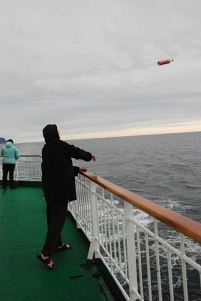
A new bottle begins its voyage
It left the English coast
To bump along the depths
Of the cold North Sea,
On its currents swept.
Dodging bottom trawlers,
Escaping Porpoise play,
Through Zooplankton and over Prawns
It drifted on its way.
Between the Squid and drilling rigs,
Endangered Sturgeons, Rays,
Much depleted Skates and Salmon,
Watched it float away.
A century it voyaged,
Gray Whales disappeared.
Herring still, in schools abound.
Cod endangered here.
Until the bottle found a beach
Upon a German shore.
The message said ‘return to me’
And promised a reward.
The scientist who sent it,
Dead a century and more,
But the group that he once headed
Is British to its core.
To find the shilling coin,
They had to search eBay.
The bottle was returned
So the promised fee was paid.
Thanks to nationalgeographic.com.
Once the only way to chart currents was to throw bottles into the ocean with messages begging they be returned. George_Parker_Bidder of Britain’s Marine Biological Association (MBA) dropped 1,020 weighted bottles into the southern North Sea between 1904 and 1906 and got half of them back within four years. Over 100 years later, a woman found one of his bottles on a beach on Amrum Island, Germany, and mailed the requested information to MBA.
Not only does the Association still exist, but they found a proper shilling to pay as promised.
Gotta love British scientists.
Alas, the sea life is very different today from when the bottle began its voyage.
Filed under: Poetry Tagged: benthic, bottom, current, eBay, endangered, extinct, fishery, George Parker Bidder, Marine Biological Association, North Sea, shilling, trawling, vulnerable








August 29, 2015
#ChildhoodsEnd on #Syfy – Invasion by aliens with a mission you don’t expect – even after 60 years of #ScienceFiciton

1st edition cover. The book is still available.
Syfy is launching a mini-series built on Arthur C. Clarke’s classic 1953 book. It won’t debut until December but the buzz has started.
“Utopia, but at what cost?”
There are lots of stories about Utopia making us lazy, and plots based on sinisterly-friendly aliens, so why has Syfy reached back to the mid-20th century for a story?
I read Childhood’s End when I was a kid – I still have a couple pictures in my head from the book – especially of the aliens – but I had to visit Wikipedia for a plot summary. (One of my memories was dead-wrong! My head is a dangerous place to leave information gathering dust for decades.)
Clarke wrote about a world at the height of the US/Soviet Cold War, when nuclear war seemed the most likely way for humanity to exterminate itself, and before the space age – some of his story is now near-ancient history. Will Syfy choose a different time period? A different threat to global survival?
Clarke wove real physics with fantasy, action with wonder and even sadness. Will Syfy take the same approach?
Syfy has been working on the series since April, 2013. The cast has been announced. There’s Charles Danc from Game of Thrones and Ricky Stormgren from Under the Dome. Trekkies (or do you prefer Trekkers?) will remember Colm Meaney from Next Generation and Deep Space Nine (though his career goes far beyond), playing a new character who’s not in the book.
Will a story written half a century ago grab today’s viewers.? I’m an old timer myself with a soft spot for the classics, but I keep reading how science fiction has changed, how today’s readers want something different, how the classic heroes were laughably stiff and movies today need more action, more fights and explosions. Will Clarke’s haunting ending survive the move to Syfy?
I usually find TV and movie adaptations less satisfying than the books they come from, but I think I’ll wait and watch Syfy’s Childhood’s End before I re-read the novel – give it a chance. After all, we live in the 21st century.
Filed under: Science Fiction Tagged: adaptations, alien invasion, Arthur C. Clarke, Charles Danc, Childhood's End, Cold War, Colm Meaney, movie, Ricky Stormgren, science fiction, SyFy, TV, utopia








August 26, 2015
Desert #Watermelon – a #poem by Kate Rauner

licensed at creativecommons.org 2.0
Wild in the deserts
Of Egypt and Sudan,
Grows hard and bitter fruit
Called gurma in the land.
Harvested and hoarded
Somewhere in the shade,
It holds a fount of water
In green flesh that it made.
Water for dry seasons,
Water kept in storage,
Water for a Pharaoh’s Ba
On his celestial voyage.
The fibrous fruit was pounded,
And the water bound would flow.
A gift to desert dwellers
Five millennia ago.
From one gene only dominant
That bitter taste was made,
So if recessive flowers met
The bitterness would fade.
Melons bearing yellow flesh,
By Common Era’s time,
Rabbis grouped with grapes and figs
As sweet within the rind.
The gene for sugar links with red,
Though DNA was not yet spelled,
Medieval farmers bred
A fruit fit for angels.
Ruby slabs of watermelon
Decorate my table,
While in the wild deserts
Its ancestral stock is stable.
Civilization could collapse,
There could be Armageddon.
But in five thousand years, our kin
Could have more watermelon.
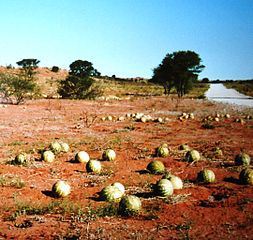
A related wild species in the Kalahari desert
Thanks to nationalgeographic.com. And thanks to Mark Twain for writing that watermelon is what the angels eat.
Filed under: Poetry Tagged: Armageddon, Ba, desert, DNA, Egypt, gene, genetics, gurma, gurum, history, Mark Twain, pharaoh, plant breeding, Sudan, Watermelon








August 22, 2015
Ho Hum #Cancer
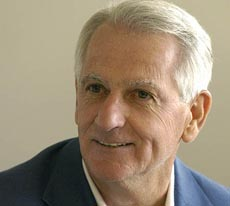
This is the face of the man who may have inspired teams of scientists to cure cancer. Fair use.
Your phone reminds you – time for the annual cancer test. You buy a capsule of nanoparticles – graphene with tiny magnetic cores, biodegradable and harmless, available over-the-counter. If you’ve lost it since last year, you buy the corresponding wrist band.
Inside your body, the nanoparticles spread out. If they encounter cancerous cells, they bind to them, and mobilize into your blood stream. Passing by the wrist band, they signal a positive result.
“Well, shoot,” you say. “I’ve got cancer. Better make an appointment – hmmm. I’m meeting friends for lunch on Tuesday. Let’s make it Wednesday.”
You don’t need to see a doctor. Technicians slide you into a radiofrequency unit, maybe after another nanoparticle dose. Radio waves kill every cancer cell in your body – solid tumor, metastasized, it doesn’t matter – without damage to healthy cells.
“Better repeat the diagnostic test in a month,” the technician warns.
Yeah, yeah… You tap the new date into your phone and go merrily on your way.
Science fiction? Distant future?
Maybe not.
“This May, [Dr. Steven A. Curley, oncologist] filed protocols with the Italian Ministry of Health to test the radio wave machine on humans diagnosed with pancreatic and liver cancer. Pending approval in the fall, human clinical trials will begin in the spring of next year in Naples, Italy.”
The initial studies are aimed at proving the treatment is safe for humans. Success will mean trials continue to find out how effective it is.
Where did this idea come from?
John Kanzius was a retired radio engineer, amateur radio operator, and dying of leukemia. Sick from chemotherapy, he:
Became a citizen scientist,
Studied cancer research,
Developed a radiofrequency-based concept to kill cancer cells without invasive surgery or chemotherapy,
Demonstrated the technique on hot dogs in his basement shop,
Dogged oncologists until he teamed up with Dr. Curley, and – well –
Read the story at newsweek.com.
Note how different it is from inventors of perpetual motion machines or pills to turn water into gasoline, who claim persecution.
Professional researchers tackled Kanzius’ inspiration.
Kanzius succumbed to his cancer in 2009, but Curley and his team (Curley has 20 researchers with expertise in nanomaterials, radiofrequency, immune function and drug delivery functions working in his lab at the Dan L. Duncan Cancer Center at Baylor College of Medicine in Houston, Texas) have carried on and now – maybe science fiction will become science fact.
If you’ve ever read that “they” don’t want to cure your illness, “they” get rich off pushing dreadful medical treatments, or “they” won’t look at ideas from outside their own lab, here’s the happy counterproof – and not just one odd-ball researcher but many.
Perhaps in the foreseeable future, the cancer industry will disappear and a diagnosis of cancer will be more like an ingrown toenail than a death sentence.
In the meantime, I applaud citizen-scientists and open-minded professionals everywhere.
I am a cancer survivor and past employee of Rocky Flats nuclear weapons plant (where cancer was cussed and discussed, as noted in the brief chapter on cancer in my dear friend’s excellent book An Insiders View of Rocky Flats.) So cancer news tends to catch my eye.
BTW – Keep the champagne corked for now: “Curley is hopeful, but cautious: ‘A whole bunch of us have been able to cure cancer in animals. You go to humans, and sometimes there are opposite results,’ he says. ‘You never know.’” And “I don’t tell patients they are cured until eight, nine, ten years down road.”
Here’s another twist – Kanzius Cancer Research, a registered, 501(c)3 nonprofit organization, has completed its mission and ceased operations as of June 30, 2014. It granted its remaining assets to three, newly created funds to facilitate Phase II human clinical trials. No endless fundraising here!
Reposted from rockyflatsfacts.com
Filed under: Neat Science News Tagged: Baylor College of Medicine, cancer, cancer industry, citizen scientist, Dan L. Duncan Cancer Center, diagnosis, drug delivery, Farrel D Hobbs, hot dog, immune function, John Kanzius, Kanzius Cancer Research, nanomaterials, oncology, radio frequency, radiofrequency, Rocky Flats, Steven A. Curley, treatment








August 19, 2015
#GoldKing #ToxicWaste is our Heritage – a #poem by Kate Rauner
Heirs to History’s Gold
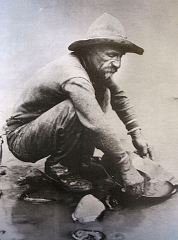
A lone California 49er
California! Paved with gold,
Loose nuggets for collecting,
Brought thousands to the western lands,
Wannabes prospecting.
A few got rich and most did not.
The way to mining heaven
Was own the general store, saloon,
Or invent jeans from denim.
The surest way to make a strike
Was be first to arrive,
So Colorado’s gold rush came
In eighteen fifty nine.
Next came Wyoming,
The Dakotas,
Idaho,
Montana;
And as the nineteen hundreds loomed,
Alaska raised its banner.
They followed placer gold streams
Into the highest mountains.
Digging for the veins of wealth
Tapped into toxic fountains.
Central City, Breckenridge,
South Park and Leadville.
Red Mountain, Cripple Creek,
Telluride, and Summitville.
The magic of the era,
Our romantic Wild West,
America’s foundation myth
Has left us quite a mess.
Four thousand mines leak acid waste
From Colorado’s peaks.
Gold Kings are gone, but we’re still here
Along the mountain creeks.
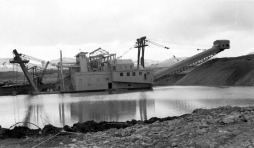
Large scale equipment replaced the lone 49er. The Gold Rush TV series featured a similar dredge last season, in use today.
It was the way that things were done,
It built the lives we lead,
But, damn, I wish they had known more
Before they did the deed.
Billions clean-ups cost us,
We heirs to history,
So we can ski and hike and fish,
Drink water hazard-free.
Boneheaded errors at an abandoned mine clean up contaminated miles of Colorado’s Animas River, all the way to New Mexico. It’s not likely to be the last disaster as America deals with the legacy of our Wild West and early 20th century. But we still find the era fascinating and alluring.
“On average, half the gold-seekers made a modest profit, after taking all expenses into account. Most, however, especially those arriving later, made little or wound up losing money…
“Recent scholarship confirms that merchants made far more money than miners during the Gold Rush… [but] many unlucky merchants set up in settlements which disappeared…
“Boardinghouses, food preparation, sewing, and laundry were highly profitable businesses often run by women who realized men would pay well for a service done by a woman. Brothels also brought in large profits.”
Mining not only built the American West, it accelerated the conquest and demise of Native Americans. wikipedia California Gold Rush and wikipedia Gold mining in Colorado
“A spill at a mine that turned a Colorado river orange and sent toxic waste barreling downstream 100 miles has many people wondering if the mining site in their town could be next. The answer from experts: Yes. Last week’s spill of three million gallons of acidic mining waste from the historic Gold King mine into the Animas River north of Durango ‘was an accident waiting to happen.'” nationalgeographic toxic pollution
Here’s the link to the Gold Rush TV series.
Filed under: Poetry Tagged: abandoned, acid, Animas River, California, colorado, Colorado mine waste, EPA, Gold King, gold rush, hardrock mining, Rocky Mountains, spill, toxic








August 15, 2015
#Chemistry of a #Firefly
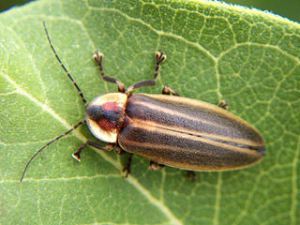
Firefly beetle looks unimpressive in daylight
As a kid, I loved fireflies – or lightning bugs. On humid summer evenings, as twilight deepened to dark, they rose from the marshy field across the road, making mosquitoes which flew with them, bearable. I swept up the slow-flying bugs with a net or even my hands and the poor beetles spent the night in a jar at my bedside. I always released them the next morning, and most survived a brief captivity.
Now science has figured out how the firefly manufactures that magical blinking glow.
I love Jason Bittel‘s concept of the firefly as a black box. You put in enzymes and proteins, oxygen, calcium, magnesium, and the wonderfully-named chemical luciferin. You get out photons – the cold, pale light of the firefly.
Previous hypotheses didn’t fully explain the chemistry, and now a scientist has shown the bug produces a special form of molecular oxygen that contains an extra electron. Electrons can release photons when they move from one atomic orbit (or quantum state) to another. Chemistry, after all, is physics made useful.
“Firefly luciferin is already proving to be a useful tool in imaging human tumors and developing cancer-fighting drugs, says lead author [Bruce] Branchini.”
But I just think it’s cool to know the little beetle is a savvy chemist.
Thanks to nationalgeographic.com for covering this Journal of the American Chemical Society paper.
Filed under: Neat Science News Tagged: anion, beetle, bioluminescence, Bruce Branchini, chemistry, electron, Firefly, lightning bug, luciferin, molecular oxygen, photon, Physics, Superoxide








August 13, 2015
#NewLook Updated Headers
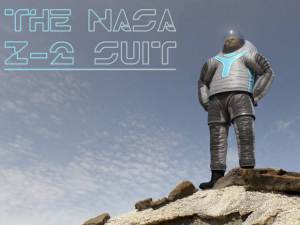
NASA is working on designs for a Martian surface suit
I’m working on my new science fiction novel – the first colony on Mars. The settlers took a one-way journey to Mars, and that may have been a mistake. As a break from the hard work of editing, I’ve created new headers for my blog. How do you like them?
Filed under: Neat Science News








August 12, 2015
Last #Bumblebee ?- #Haiku by Kate Rauner
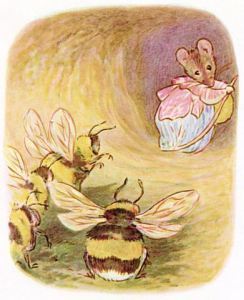
Bumblebees sometimes colonize rodent burrows.
Too hot in the south
Not enough spring flowers bloom
To move farther north
Thanks to cbc.ca for this sad news.
Filed under: Poetry Tagged: Bumblebees, Canada, climate change, global warming, haiku, spring








August 8, 2015
Colony #OnMars – First Step for Who? Or What?
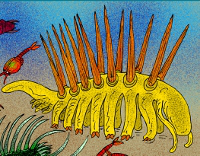
Wonderful Hallucigenia of the Burgess Shale fossils.
“Eventually we’ll have to get out of this solar system because our Sun is dying. If humans want to survive as a species they’ll have to get out.” Stephen Petranek, award-winning science writer – see his TED talk on the end of the world.
Many people want a colony on Mars as insurance against human extinction on Earth – usually from nuclear war to asteroid impacts.
But from the Sun dying?
In 5 billion years or so the Sun will expand and swallow the inner planets before collapsing into a white dwarf.
But in only 2.8 billion years life on Earth will end when the last of the hardiest microbes die off in the Sun’s brutal solar output. Humanity’s progeny will be gone long before then.
“Two new modeling studies find that the gradually brightening Sun won’t vaporize our planet’s water for at least another 1 to 1.5 billion years. Earth will suffer a “runaway greenhouse” in 600 million to 700 million years when we’d probably be best off living in undersea cities.
Realistically, how long have we got? Let’s choose a nice, round 500 million years. Let’s say all goes well – we adapt to global warming, we refrain from exterminating ourselves, and we grow into an admirable species. That species will not be Homo sapiens.
Five hundred million years is a long time. Looking backwards at history, the Cambrian explosion of life was well underway 500 million years ago when various fascinating wormy creatures lived in Earth’s oceans. It took over 400 million years for primates to originate (85 million years ago) and another 65 millions years for the Hominid family to emerge (20 million years ago). Another 15 million years passed before our own genus, Homo, emerged (3 million years ago – there’s no point in being too specific on timing – just round the numbers off), and you still wouldn’t want to bring Homo habilis home.
What does this mean? Five hundred million years from now, our descendants will be as different from us and we are from Hallucigenia.
How much do you care about these strange future creatures?
I once read a science fiction story where nuclear war destroyed most of the world, and a few people survived on barren Pacific atolls where they evolved into something like walruses. How much effort would you put into preserving that species?
Go to Mars, go to Europa or Titan. Aim for the stars. But don’t worry about the Sun exploding.
“Where are we going? Life, the timeless, mysterious gift, is still evolving. What 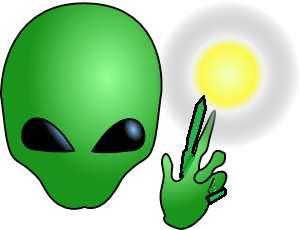 wonders, or terrors, does evolution hold in store for us in the next ten thousand years? In a million? In six million? Perhaps the answer lies in…the Outer Limits,” The Sixth Finger episode.
wonders, or terrors, does evolution hold in store for us in the next ten thousand years? In a million? In six million? Perhaps the answer lies in…the Outer Limits,” The Sixth Finger episode.








August 5, 2015
#Life is Made of #Comet s – a #poem by Kate Rauner

Artist’s concept of Philae’s touchdown on Comet 67/P
A – ce – ta – mides,
Pro – pi – on – al – dehydes,
That’s what the spectrum’s made of.
Snips and snails
And puppy-dog tails,
That’s what boys are made of.
Ice and dust
And organic musts,
That’s what comets are made of.
Sugar and spice
And everything nice,
That’s what girls are made of
Brought to Earth
Eons ago
That’s what life is made of.
Thanks to Wikipedia for versions of the 19th century nursery rhyme. And to Rosetta , the first spacecraft to orbit a comet; to Philae, the first to achieve an almost-soft landing on one; and the “sexiest mass spectrum” ever for what comets are made of. [nationalgeographic.com]











